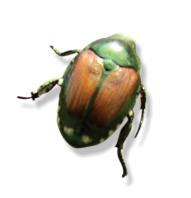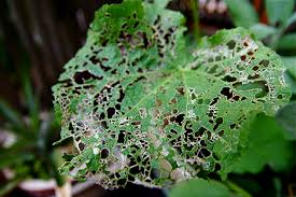
Japanese Beetles



Ultralawn Incorporated
1055 East 260th Street
Euclid, OH 44132
216.731.7756
440.951.3738
Office hours Monday-Friday 9-3 call today with any questions

The Japanese beetle is a major pest of lawns and ornamental plants. Adult beetles feed on more than 275
species of plants, but especially like plants in the rose family. Grubs (larvae) feed on the roots of turfgrasses
such as Kentucky bluegrass, fine fescues, ryegrasses, or bentgrasses.
Life Cycle and Habits
The entire life cycle requires about one year. Japanese beetles are metallic green with
coppery-brown hardened front wings, and are just a 1/2 inch long. Beetle emergence
begins in mid-June and peaks in early July. Beetles will remain active for about 4-6 weeks. Most
of the egg laying occurs in July and tapers off rapidly by the first week in August. Generally, the
amount of daily beetle activity will give some indication of grub populations that can be expected later
in
the summer. Most beetles remain close to the emergence area, and adult females lay 40-60 eggs near the
adult feeding site. Beetle eggs hatch in about 10 days and grubs begin feeding on grass roots. Grubs are "C-
shaped", creamy colored, with brown heads, 3 pairs of legs and are about 1 inch long when mature. Root loss
from grub feeding during August and early September may be so extensive that the turf can be rolled back
from the soil like a rug. By mid October, the grubs move down into the soil 6-18 inches and remain inactive
until spring. In late March or early April, they return to the surface and briefly feed on roots. During late May,
they stop feeding, pupate and emerge as adults in June.
Beetle Control Options
From a management standpoint, it is important to recognize that both the adults and larvae can cause
damage. Moreover, since Japanese beetle adults are capable of flying in from other areas, controlling one life
stage will not preclude potential problems with the other. Although several species of birds feed on adult
beetles, their efforts are insufficient to prevent injury to ornamental plants, and even the best insect controls
will only provide temporary relief when adult populations are heavy. Unfortunately, most pest controls
remain effective only for a few days and any new plant growth will not be protected. Due to the continuous
migration of beetles, 2 or 3 Ornamental Tree and Shrub spray applications may be needed to prevent serious
injury to plants like roses and sand cherry bushes. Control of the grub stage requires a properly timed grub
application.
Trapping Beetles
The commercially available yellow Japanese beetle traps are baited with a feeding attractant and capture
large numbers of adults. However, randomly spaced, single traps cannot provide effective control.
Frequently, a single trap attracts beetles from the entire neighborhood and concentrates the damage in a
small area close to the trap site. Research has demonstrated a 31-40% increase in adjacent plant damage
when traps were used close to susceptible plant species.




Japanese Beetle feeding on foliage
Japanese Beetle damage to foliage


















